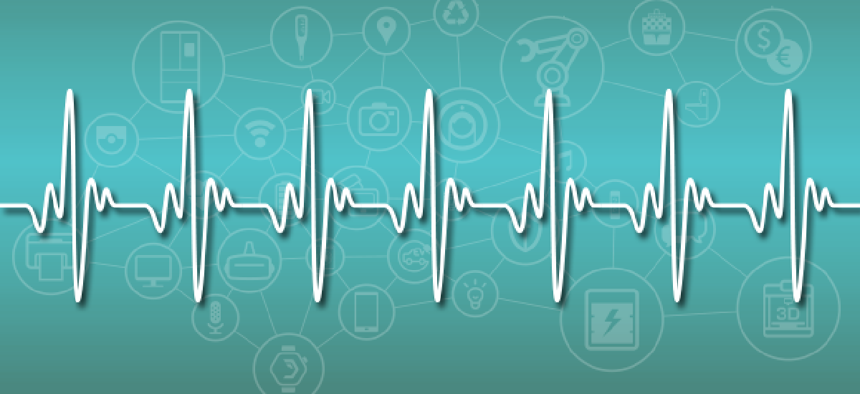Not new, but different, data to improve health

The Hewlett Packard Real-Time Health System prototype incorporates big data not commonly found in the clinical space to augment health records managed by patients' care providers.
Even the best electronic health records do not provide enough information for doctors who only see patients when they don’t feel well.
If there were a way to learn about what is happening in patients’ natural environment before they get to the doctor, that data could potentially help get patients more immediate care and a more accurate diagnosis.
The Hewlett Packard Enterprise's Real-Time Health System (RTHS) prototype incorporates big data not usually available to health professionals, explained Bo Dagnall, the chief technologist at Hewlett Packard Enterprise Services who is heading up the project.
“RTHS is about leveraging information not commonly in the clinical space to make clinical decisions,” Dagnall said. “Specifically, this means pulling data from sources like mobile devices, [personal health records], wearables, home devices, sensors, implanted devices, video sources and social media to augment what is recorded in the electronic medical record (EMR) managed by patient’s care providers.”
For public health, RTHS plans to draw from social media to map where people are talking about certain diseases or symptoms. “It is amazing what people are willing to share in social media,” Dagnall said. “If you’re able to realize that all of a sudden there is a trend of people in South America talking about Zika on Snapchat and Twitter, you may be able to infer that people there need additional screening.”
Beyond an electronic record
On the patient level, RTHS will work to identify health issues before a patient even gets to the doctor’s office, using many devices already available.
“We only know about you as a patient when you are being seen by a doctor,” Dagnall said. In a hospital, patients are typically under distress and may give the doctor wrong or incomplete information that then becomes the basis of a diagnosis.
“But most of your life is present outside the doctor’s office,” Dagnall said.
For a stroke patient, for example, RTHS technology can analyze data from a woman’s “sleep monitors that [track] her vital signs so we know what is normal and not normal for her. Or maybe she has a watch that monitors slurred speech,” he said. It can track her symptoms and reach out to her doctor if she needs care immediately.
For infectious diseases like Zika, Dagnall explained, it is important to know what people have been exposed to, where they have been, what their biometrics are before, during and after a potential exposure and how well they are following treatment if diagnosed. These same sensor- and tracker-based technologies used to monitor stroke patients can do exactly this.
Delivering relevant, real-time data is a challenge
Dagnall, who said the project is in the developing stages, said using devices and social media to collect data is just the “tip of the iceberg” when it comes to creating an RTHS with real value to the health community. Next up for Hewlett Packard Enterprise is finding a way to make sure the relevant data is aggregated from these sources and packaged it in a useful way.
The technical challenges are solving the data integration and analytics challenge, Dagnall said. “For Zika, this means collecting location, exposure, environmental, behavior, biometric, epidemiology and compliance indicators off a variety of devices and aggregating them into a repository where we can understand the trends, correlations and temporal associations that exist across data sets.”
This is especially difficult with enormous datasets, Dagnall said. Most of the data will not be useful, and some of it might not seem useful alone, but when overlaid with other data points, becomes significant. “A rich analytics capability is required to ‘find the needle in the haystack’ and differentiate the signal from the noise,” he said.
The final challenge is to present the information in real time so that it empowers patients and clinicians to make timely decisions. “For the patient, RTHS is about health data democratization. With new technology, patients are empowered to track biometrics, do low-level self-diagnosis and monitor health protocols. For clinicians, this is the next logical step after the EHR for computer-assisted clinical data management and decision making.”
Hewlett Packard Enterprise, which has funded the research so far, is still waiting for a client to move the project forward and into real-time use. In the meantime the company is testing out how RTHS can be used for different health issues ranging from diabetes to mental health.
Editor's note: This article was changed July 8 to correct the spelling of Mr. Dagnall's last name and the unit of the company.
NEXT STORY: Data governance for each step in data’s journey





